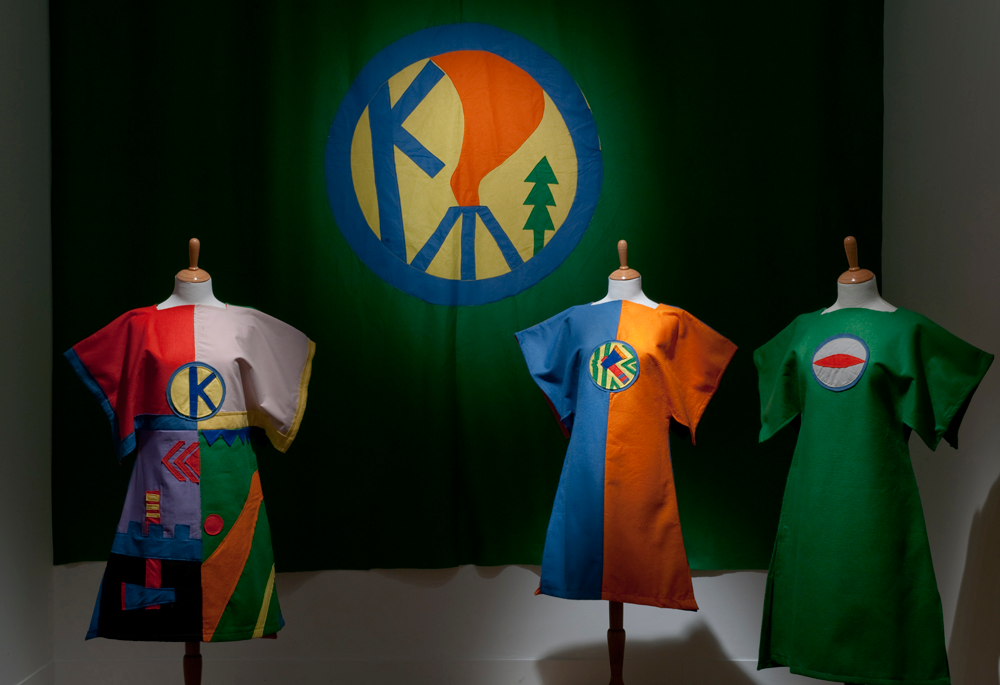Olivia Plender
Bohemianism, grass-roots activism, urban regeneration and the voices of the dead
Bohemianism, grass-roots activism, urban regeneration and the voices of the dead

A banner on a frontispiece in Olivia Plender’s graphic novel, A Stellar Key to the Summerland (2007), reads ‘They Being Dead Yet Speaketh’. The injunction, in its faux-obsolete vernacular, provides an ironic introduction to Plender’s varied, research-based approach to making art. This illustration commemorates the sisters Kate and Maggie Fox, who, one evening in 1848, heard raps on their bedroom wall – supposedly a ‘spiritual telegraph’ – that led them to solve the murder of a peddler buried beneath their floorboards. The story belongs to the mythology of mid-19th-century Modern Spiritualism, an American religious and social reform movement which – interestingly for Plender – promised direct communion with the spirit world, circumventing the need of preachers or other authority figures. Plender mines history for such cases; she is interested in movements organised by groups in order to empower individuals, which she then explores in performances, videos, graphic novels and installations. She also seeks to reveal the converse of these examples, exploring present-day assumptions and structures that enforce social hierarchies. These have included the BBC, beloved of the middle class, with its agenda to ‘inform, educate and entertain’; the economic and social processes of urban gentrification; and the Romantic formulation of the artist as outsider, solitary and male.
Much of Plender’s research takes place close to her home in London, and centres on the role of the artist and on histories of British radicalism. Her piece for the Tate Triennial 2009, Machine Shall Be the Slave of Man, but We Will Not Slave for the Machine (2008), for example, focused on the early 20th-century English youth movement, the Kindred of the Kibbo Kift, which later organized into a political party promoting monetary reform. Her video Monitor (2006), a re-make of a BBC programme from the 1960s' series, tracks changes in artistic circles from that decade to the present, from artists’ marginal status 40 years ago, which was winningly sold as Bohemianism, to the class aspirations of fashionable contemporary artists, who are pictured quaffing champagne. Not only has the look of artists changed but also their rhetoric: Monitor plays the original commentary from the 1960 programme, in which four up-and-coming artists – none well-known today – speak earnestly of their art practice in terms of self-expression and understanding. They are inspired, too, by the areas in which they live: the rough, ramshackle neighbourhoods of Kensington and Notting Hill. That these are now the postcodes of the wealthy – Plender illustrates Monitor with contemporary images of these now swanky neighbourhoods – is not unrelated: gentrification begins with ‘creative types’.

Plender has also been co-editor of the art magazine Untitled, organized a series of talks as part of a curatorial collective, and designed seminar and symposia spaces, all of which often feed back into her practice. ‘TINA’, a show she recently curated at The Drawing Room in London, took its title from Margaret Thatcher’s famous pronouncement about market liberalisation – ‘there is no alternative’ – and looked at different visual representations of neo-liberal capitalism. The show asked what imagery this economic system bequeaths to us, from postmodern architecture to the absent presences of re-packaged debt and off-shore loans. Such a questioning of real-world alternatives runs throughout Plender’s work, which constantly analyses the relationship between what we perceive, and what we assume is plausible. A Stellar Key to the Summerland, far from being a celestial key, is a contemporary one: the book includes at its back an index of current places in London that once played a part in Britain’s own Spiritualist movement. In a 2006 performance organized by London’s Serpentine Gallery, Plender, dressed in a high-necked and full-skirted period dress, led a group around these sites. There are indeed some modes of communication that appear so related to how we take in information that they seem to offer no alternative – narrative, for instance. Part of Plender’s approach entails re-imagining not just the content of history but how it is circulated: comparing folk traditions with grass-roots activism, both of which are passed from person to person rather than codified in book or lecture. However, despite her fascination with the past, Plender’s main concern is with the present, in the search for alternatives to her own remit as artist and the economic and social conditions that the ‘artist’ is, traditionally, bracketed off from.
























